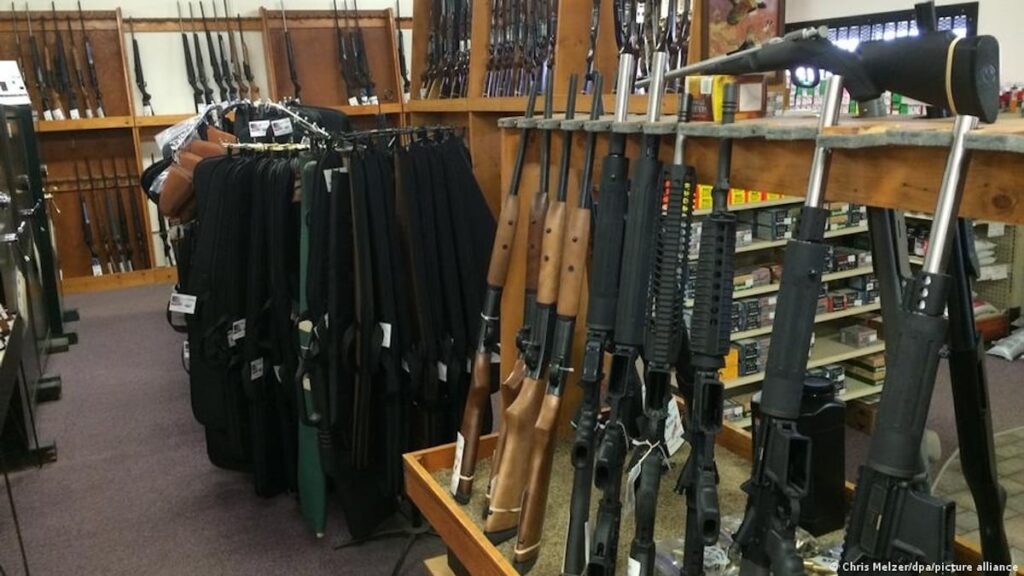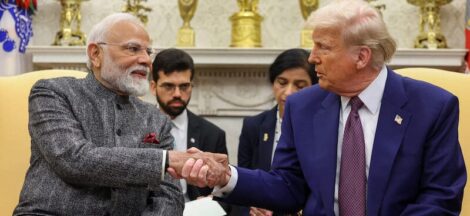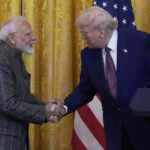For an import-dependent country on critical arms supplies, it may be risky to get involved in a long-drawn war. Ukraine, currently the world’s biggest arms importer, learnt the hard truth after Donald Trump became the US president. Recently, Ukraine had to part with its substantial mineral (rare earth) deposits to secure US arms supplies to fight Russia. Last year, Ukraine displaced India as the world’s largest arms importer. The US accounted for around 45 percent of Ukraine’s total arms imports, while Germany and Poland provided 12 percent and 11 percent respectively. Without the US help, Ukraine would have possibly surrendered before Russia within months of the Russian attack.
Thanks to the growing military impasse in Europe, Asia, and Asia-Pacific regions, the demand for arms and ammunition has substantially grown in recent years. According to the Stockholm International Peace Research Institute (SIPRI), the world is witnessing an unprecedented rise in military expenditure. The global military expenditure reached $2.718 trillion last year, an increase of 9.4 percent in real terms from 2023. It is the steepest year-on-year rise since the end of the cold war. Military spending increased in many parts of the world. It witnessed rapid growth in both Europe and West Asia. The top five military spenders are the US, China, Russia, Germany and India. Together, they accounted for 60 percent of the global total, with combined spending of $1.635 trillion.
Military spending in Europe (including Russia) rose by 17 percent to $693 billion last year. It was the principal contributor to the global increase in military spending in 2024. With the war in Ukraine continuing in its third year, military expenditure kept rising across the continent, pushing European military spending to a record level. Russia’s military expenditure reached an estimated $149 billion in 2024, 38 percent higher than the previous year. It represented 7.1 percent of Russia’s GDP and 19 percent of all Russian government spending. At 34 percent of GDP, Ukraine had the largest military burden of any country in 2024.
Several countries in Central and Western Europe saw an unprecedented rise in their military spending in 2024. Germany’s military expenditure rose by 28 percent to reach $88.5 billion, making it the biggest spender in Central and Western Europe and the fourth largest in the world. Poland’s military spending grew by 31 percent to $38.0 billion in 2024, representing 4.2 percent of Poland’s GDP. For the first time since its reunification, Germany became the biggest military spender in Western Europe. Thanks to President Trump’s dislike for supporting NATO’s huge military spending, the policies adopted by Germany and many other European countries suggest that Europe has entered a new era of high and increasing military spending.
The US military spending itself rose by 5.7 percent to reach $997 billion, which was 66 percent of total NATO spending and 37 percent of world military spending in 2024. A significant portion of the US budget for 2024 was dedicated to modernizing military capabilities and the US nuclear arsenal in order to maintain a strategic advantage over Russia and China. European NATO members spent $454 billion in total, representing 30 percent of total military spending across the alliance. Going by the global arms exports data, the top 10 arms manufacturing countries are: the US, Russia, France, China, Germany, Italy, UK, Spain, Israel, and South Korea.
The military expenditure in the West Asian region jacked up by 15 percent to an estimated $243 billion in 2024. Israel’s military expenditure surged by 65 percent to $46.5 billion last year, the steepest annual increase since 1967, as it continued to wage war in Gaza and escalated conflict with Hezbollah in southern Lebanon. Its military burden rose to 8.8 percent of GDP, the second highest in the world. Lebanon’s military spending rose by 58 percent in 2024 to $635 million.
Surprisingly, Iran’s military spending dropped by 10 percent in real terms to $7.9 billion in 2024 despite its involvement in regional conflicts and its support for regional proxies. The impact of sanctions on Iran may have limited its capacity to increase military spending. Iran has developed a significant drone industry, notable for its multiple types of drones, including Kamikaze and multi-role UAVs. Iran is known for producing affordable and readily available drones, such as the Shahed-136 and Shahed-131.
China, the world’s second largest military spender, raised its military expenditure by seven percent to an estimated $314 billion. China accounted for 50 percent of all military spending in Asia and Oceania, continuously investing in modernization of its military and expansion of its cyberswarfare capabilities and nuclear arsenal. Japan’s military expenditure rose by 21 percent to $55.3 billion in 2024, the largest annual increase since 1952. Its military burden reached 1.4 percent of GDP, the highest since 1958. India’s military expenditure, the fifth largest globally, grew modestly to $86.1 billion.
Amid rising tensions with India over the April 22 Pahalgam terror attack, cash-strapped Pakistan endorsed an 18 percent hike in defence spending in its 2025-26 budget. India’s defence budget for the current financial year too showed a record 9.53 percent rise as the country looks to modernise its armed forces and indigenous defence production against heightened geopolitical tensions. India’s armed forces will receive Rs.6.81 trillion (USD78.3 billion), although only 26.4 percent of this budget will be spent on new acquisitions. Almost 23.6 percent will go towards pensions, which have been a major burden on India’s defence spending since 2008. Almost 75 percent of the procurement sub-budget, or Rs.1.12 trillion, will be set aside solely for domestic spending.
Ironically, the two rival South Asian nations, Pakistan and India, are heavily dependent on arms imports. India’s historic import dependence on arms should be a matter of genuine concern for the country surrounded by hostile neighbours such as Pakistan, China and Bangladesh. Russia, itself fighting a prolonged war with Ukraine, remains the largest arms supplier to India although its share has decreased. India is increasingly diversifying its arms imports. However, the country needs to be self-sufficient in producing critical arms to be truly militarily powerful. No country can sustain a long-drawn war with imported arms. Currently, two of India’s close defence allies and suppliers, Russia and Israel, themselves are involved in prolonged wars.
As in the case of India, Pakistan too is substantially import dependent for critical arms. It relies heavily on next door China for such arms supplies. China accounted for 81 percent of Pakistan’s arms imports between 2020 and 2024. China’s dominance in this area has increased over the past decade. Now, Pakistan, which is less than one-fourth the size of India, is the fifth-largest arms importer globally, accounting for 4.6 percent of global arms imports. Last year, the world’s top five arms importers were Ukraine, India, Qatar, Saudi Arabia, and Pakistan. Almost entirely dependent on China for sophisticated weapons, Pakistan can’t involve itself in a long-drawn war unless it continuously gets substantial artillery support from China. (IPA Service)




 Narendra Modi Has Been Trapped By Trump – He Has To Get Out Of That With Head High
Narendra Modi Has Been Trapped By Trump – He Has To Get Out Of That With Head High 